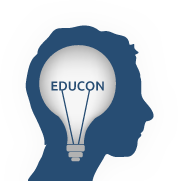Reading Writing Workshop gone Digital
At the start of this school year, my 10th graders agreed to embark on a grand experiment with me — to turn our English class into a self-directed workshop for reading and writing. Students pick their own independent reading books, and also decide what they most needed to write, and the lessons would grow organically out of their choices. This model has been described plenty – notably by Nancie Atwell, whose book “In the Middle” provided much inspiration – but at SLA, we are taking the next step by integrating digital tools, as well as scaling the model up for larger class sizes. Come hear from students and their teaching team about the joys, challenges, and lessons of building a class together. The ideas we have to share about inquiry and self-directed learning apply to any and all disciplines.
Conversational Practice
Students from the class will be the primary facilitators of this conversation. Discussion will happen both as one group and in breakouts. The session will also provide space for attendees to identify where they could incorporate these practices into their own classroom or school.
-
Joseph Forsyth
-
Brian Sweeney
-
Kira Baker-DoyleArcadia University School of Education
-
Marc DupuisÉcole secondaire catholique Garneau
-
Eileen MarksNYC DOE
-
Deanna Donza
-
Maryann MolishusCouncil Rock SD
-
Jennifer WardGrandville High School
-
Mary MurphyDouglas County School District
-
Kristy VincentHardin ISD
-
Timothy BoyleScience Leadership Academy Middle School
-
Rita Chesterton
-
Larissa PahomovScience Leadership Academy
-
Jennifer JenkinsCareer Education Facilitator, Teacher
-
Amal AboulhosnUniversity Prep Charter High School
-
Kristin LuebbertBache-Martin School, TAGPhilly, PFT
-
sheila morissetteSurrey School District
-
Mary Fran TorpeyFriends' Central School
-
Raomej CaroTutor Associates
-
Kristen OutenNorth Carolina State University
-
Edward EwachaTeacher at Earl Marriott Secondary School
-
Katherine Cairns
-
Norah Mallaney
-
Ann Labak
-
Susanne FlynnAsset STEM Education
-
Molly MyersLindblom Math & Science Academy
-
Leslie HealeySt. Mark's High School
-
Michelle Okal-FrinkWNYRIC & NYS Model Schools
-
Carrie Hagen
-
Timothy Smith
-
Ann AdamsSt. Patrick's Episcopal Day School
-
Jennifer Luff
-
Lisette CaseyManitou Springs School District
-
Dave Thomer
-
Paul AllisonWriting Partners / New York City Writing Project
-
Margo Jantzi
-
Patti Ruffing
-
Marcy Sweetman
-
Ann Leaness
-
Rebecca SchmidtInspired Teaching School
-
Bethany DeWeeseNCSU
-
valerie stinsonHampton Roads Academy
-
Beth Maclehose
 EduCon 2018
EduCon 2018
Log in to post a comment.